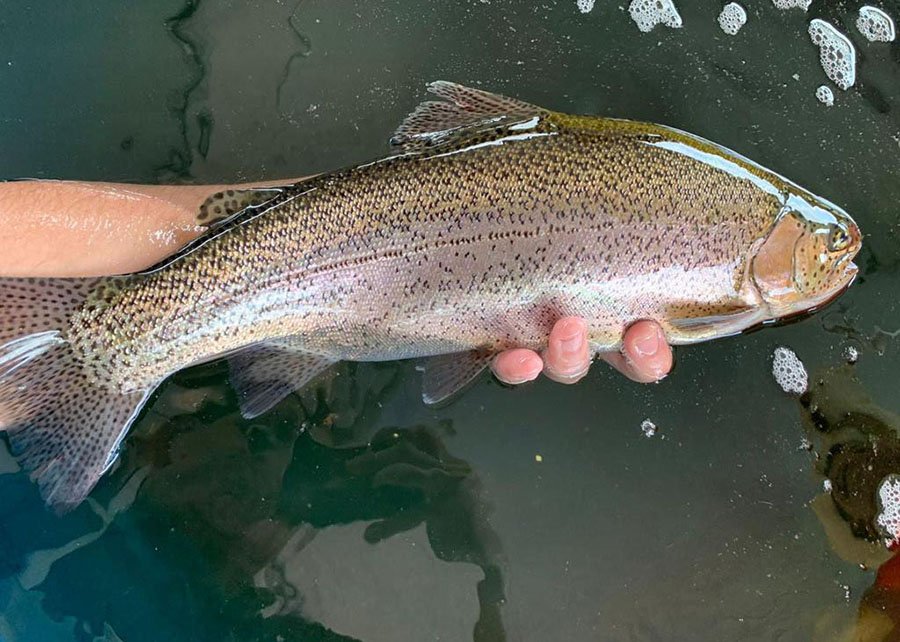
In recent years, consumers have shown a growing interest in natural and sustainable food products. This increasing demand has led researchers to explore natural additives that can enhance the quality and shelf life of food products. One of these promising natural additives is barberry (Berberis vulgaris), a plant known for its antioxidant and antimicrobial properties.
A recent study published by scientists from Atatürk University in the Journal of Food Composition and Analysis investigated the effects of dietary barberry fruit extract (BFE) on the physical, sensory, and microbiological properties of rainbow trout (Oncorhynchus mykiss) fillets during refrigerated storage.
Barberry: An Innovative Potential
Essential oils and plant extracts have been used in fish feed to improve fillet quality, with herbal-based products preferred over synthetic ones due to their low cost, ease of access, effectiveness at lower doses, biodegradability, pathogen control efficacy, and environmental friendliness.
One such plant with significant potential is barberry (Berberis vulgaris). Native to many parts of the world, barberry has been used in traditional medicine for centuries due to its various health benefits. Recent studies have shown that barberry extracts can also improve fish growth, immune response, and overall health.
Barberry, a shrubby plant from the family Berberidaceae, is one of the oldest plants used in traditional medicine due to its rich content of alkaloids, carotenoids, organic acids, phenolic compounds, flavonoids, anthocyanins, and vitamins E and C. Barberry fruits are also used as natural pigments and antioxidants due to their high anthocyanin and carotenoid content.
The Study
Previous studies on rainbow trout and Siberian sturgeon have reported that dietary methanol extract of barberry root improved growth performance, immune system, and antioxidant capacity. Meanwhile, dietary ethanol extract of barberry fruit enhanced immunological parameters, improved antioxidant capacity, reduced stress, and improved growth, feed efficiency, and digestive enzyme activities.
This study involved feeding rainbow trout with diets containing different levels of methanol barberry extracts: 0 (B0), 0.5 (B0.5), 1 (B1), and 2 (B2) g/kg over 10 weeks. The fish were then refrigerated for 21 days to monitor the quality parameters of rainbow trout fillets during refrigerated storage at weekly intervals.
Key Findings
The results showed that adding BFE to the diet significantly affected the shelf life, color, and sensory attributes of rainbow trout fillets. Total bacterial counts decreased with increased BFE levels in the diet, while pH remained unaffected by the BFE level or storage duration.
Stay Always Informed
Join our communities to instantly receive the most important news, reports, and analysis from the aquaculture industry.
In summary, the key findings are:
- Improved Shelf Life: Fish fed higher levels of BFE exhibited longer shelf life with reduced bacterial growth and lipid oxidation.
- Enhanced Color: BFE supplementation resulted in more vibrant red coloration of fish fillets, making them visually more appealing to consumers.
- Superior Sensory Attributes: Fish fed with BFE diets scored higher in sensory evaluations, indicating better taste, texture, and overall acceptability. The sensory analysis revealed that fillets from the B2 diet group were the most favored, receiving the highest scores across all parameters.
- Reduced Lipid Oxidation: BFE’s antioxidant properties helped mitigate lipid oxidation, a process that can lead to rancidity and quality deterioration in fish.
Implications for Rainbow Trout Farming
The study’s findings suggest that BFE could be a valuable natural additive in aquaculture to improve the quality and shelf life of aquaculture products. By incorporating BFE into fish diets, fish producers can enhance the overall quality and market value of their products (fish fillets) while meeting the growing consumer demand for natural and sustainable food options.
Conclusion
The study suggests that BFE can be used as a natural dietary additive for rainbow trout at 2 mg/kg to improve fillet coloration and overall appreciation, extending shelf life by up to 2 weeks.
However, further research is needed to explore the optimal BFE dosage and its potential applications in other fish species. Nonetheless, the promising results of this study highlight the potential of natural additives like barberry to revolutionize the aquaculture industry.
The study was funded by the Atatürk University Research Foundation.
Contact
Murat Arslan
Department of Aquaculture, Faculty of Fisheries, Atatürk University
Erzurum 25240, Turkey
Email: muratars@atauni.edu.tr
Reference
Tacer-Tanas, S., Oguzhan-Yildiz, P., & Arslan, M. (2025). How fillet quality changes in rainbow trout (Oncorhynchus mykiss) fed diets supplemented with barberry (Berberis vulgaris) fruit extract. Journal of Food Composition and Analysis, 137, 106986. https://doi.org/10.1016/j.jfca.2024.106986
Editor at the digital magazine AquaHoy. He holds a degree in Aquaculture Biology from the National University of Santa (UNS) and a Master’s degree in Science and Innovation Management from the Polytechnic University of Valencia, with postgraduate diplomas in Business Innovation and Innovation Management. He possesses extensive experience in the aquaculture and fisheries sector, having led the Fisheries Innovation Unit of the National Program for Innovation in Fisheries and Aquaculture (PNIPA). He has served as a senior consultant in technology watch, an innovation project formulator and advisor, and a lecturer at UNS. He is a member of the Peruvian College of Biologists and was recognized by the World Aquaculture Society (WAS) in 2016 for his contribution to aquaculture.




